|

Evanston, circa, 1877, woodcut, Leslie's Illustrated News.
Coal was discovered three miles north of town in Almy. Almy, at
one time, was in fact larger than Evanston and had a population at its peak of
approximately 5,000, many of whom were Chinese. The Chinese had originally been
brought in to work on the Railroad and remained to work in the mines.
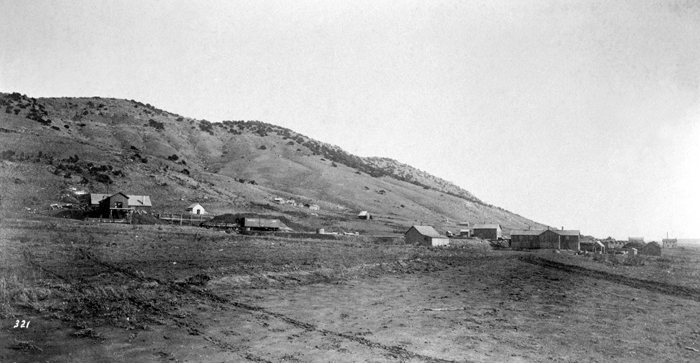
Coal Mines at Almy, Photo by William Henry Jackson, 1871.
In 1882, Levancia Bent visited Evanston preparatory to accompanying a sheep drive from Evanston to Nebraska. While in
Evanston she took a ride to Almy. She described the inhabitants as "Chinamen and their antagonists, the Irish." On the main street
were a "higher grade of Chinese" whoses houses were "ornamented with patches of bright colors covered with their hieroglyphics." On the next
two streets were plain rough buildings, all alike. Within throught the open doors could be seen dirty floors, rough benches for chairs, boxes and rubbish filling their rooms.
Further over were the Irish with white curtains and plants in the windows. Mrs. Bent was not
overly impressed with Evanston, "Evanston is quite a town, but lacks shade and a place to hide old empty cans and bottles." See
24 Annals of Wyoming, "Levancia Bent's Diary of a Sheep Drive, Evanston, Wyoming, to Kearney, Nebraska, 1882, Janauary 1952, p. 24, George Squires Harrington, Editor.
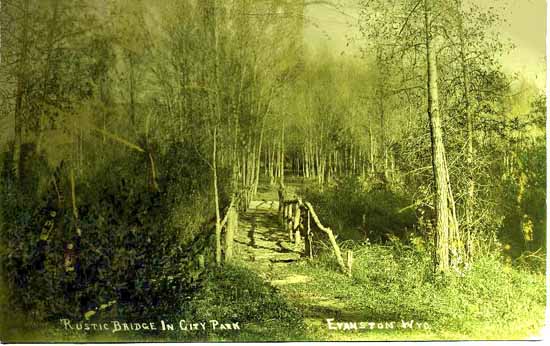
City Park, Evanston, approx. 1900. .
Mrs. Bent's comments about lack of shade were a bit exaggerated. While the site of the city may have been
at first somewhat short of trees, an area of aspins and other trees was along Bear River. The City in the late 1890's acqquired
the grove on the west side of the river as a park.
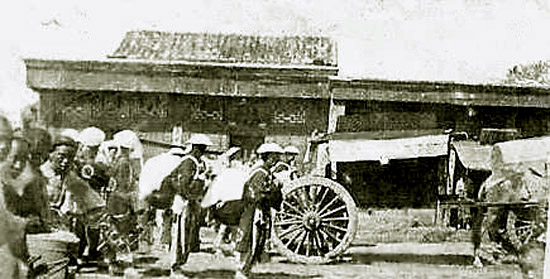
Chinese railroad workers, Rawlins, Wyoming, undated.
Indeed, Evanston had one of the
very first Joss houses in the west, constructed in 1874. A Joss house or Miu is not, strictly speaking,
a temple but more of a house of prayer, distinct from a temple or monestary. Each year the
Chinese would celebrate Tet with a parade featuring a Gum Lung, a Chinese
silk dragon, with one individual being designated as the keeper of the
temple for the ensuing year. Miriam F. Leslie, wife of the publisher of
Leslie's Illustrated News, in her description of her 1877 journey across
Wyoming, described the Chinese in Evanston:
Evanston was where we first saw the Chinese cheap-laborer. These laborers
who helped build the Central Pacific Railroad, still live in small groups
throughout the Far West. While their hovels are small and dirty, I found
the Chinese to be a very clean, pleasant people. Clean! Cleanliness ... is
a matter of obsession with these quiet, little people! They bathe every
day--a full bath! Can you imagine? One would be liable to catch pneumonia!
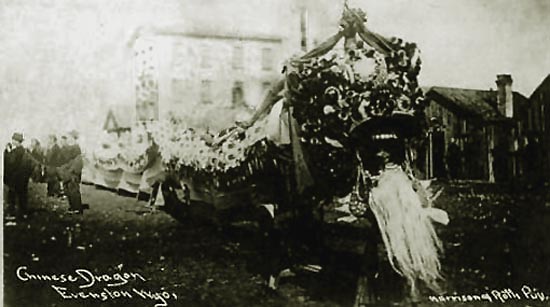
Chinese parade, 1908.
Many of the Chinese who had to flee Rock Springs in
1885 took refuge in Evanston. See discussion under of the Rock Springs Massacre
Coal Camps.
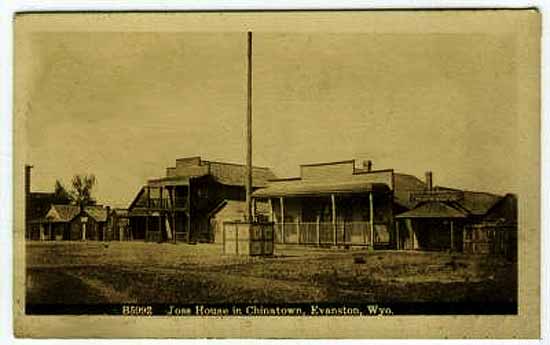
Joss House, Evanston.
On January 16, 1922, the Union Pacific
evicted the Chinese from their Company owned houses. Forty-five minutes later
the Joss House burned down. The Joss house was located across the railroad tracks
from the depot.
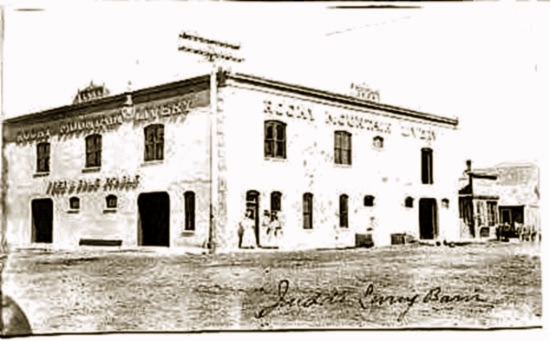
Harry R. Judd's Livery Barn, corner of Main and 4th Streets, approx. 1900
Judd purchased the livery in 1899 from M. W. Foote. The livery was operated under the name
"Rocky Mountain Livery Stable." The business in addition to providing Livery feed and
boarding also performed drayage of all kinds.
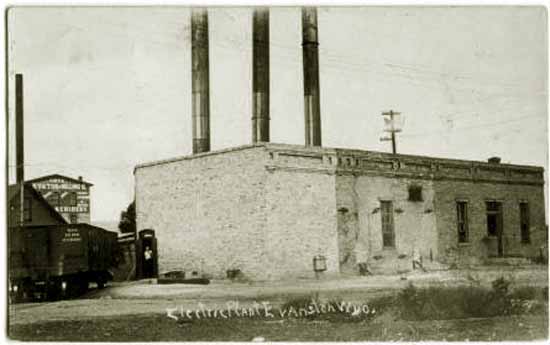
Electric Plant, Evanston.
Electric service for street lighting began as early as 1888.
The City granted a franchise in
1899.
Next page: Booth & Crocker.
|